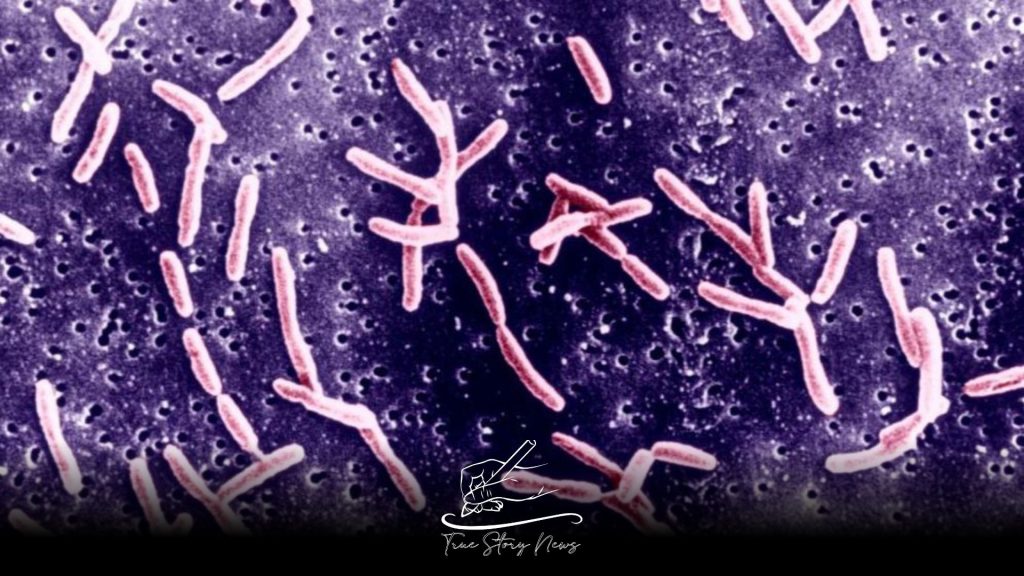In a recent incident in Pune, a city in western India, a school teacher discovered that her six-year-old son was distressed over his homework.
“I removed certain words and requested that he write them down.” “I assumed he was angry, and that’s why he wasn’t holding the pencil properly,” she stated in an interview with the Indian Express.
She could not have anticipated that his difficulty in gripping a pencil would mark the initial indication of Guillain-Barré Syndrome (GBS), a rare condition characterised by the immune system’s assault on nerve cells, leading to muscle weakness and paralysis.
Just days later, the boy found himself in intensive care, rendered unable to move his arms or legs. As his health deteriorated, he became unable to swallow, speak, and ultimately breathe, necessitating the use of a ventilator. He is currently in the process of recovery.
A boy is one of approximately 160 reported cases of Guillain-Barré Syndrome (GBS) that have emerged since early January in Pune, a city known for its educational and IT sectors, surrounded by various industrial towns and villages. Five deaths are currently under suspicion. As per the latest official figures, there are currently 48 patients receiving intensive care, with 21 on ventilators. Meanwhile, 38 patients have successfully been discharged.
Guillain-Barré Syndrome (GBS) often starts with tingling or numbness in the extremities, particularly the feet and hands. This initial phase is typically followed by muscle weakness and challenges in joint movement. The progression of symptoms generally intensifies over two to four weeks, with initial manifestations often observed in the arms and legs. The mortality rate reported ranges from three to 13%, influenced by the severity of the condition and the quality of healthcare support available.
The recent outbreak in Pune has been linked to a pathogen known as Campylobacter jejuni, recognised as a primary contributor to foodborne infections and a significant factor in the incidence of Guillain-Barré syndrome globally. In the 1990s, researchers uncovered a substantial connection in rural China, where a prevalent pathogen in chickens coincided with outbreaks of GBS during the monsoon season. This correlation emerged as children engaged in play in water tainted by the droppings of chickens and ducks.
GBS is relatively prevalent in India. Researchers Monojit Debnath and Madhu Nagappa from the National Institute of Mental Health and Neurosciences (NIMHANS) in Bangalore conducted a study involving 150 patients diagnosed with Guillain-Barré Syndrome (GBS) from 2014 to 2019.
A recent study revealed that 79% of patients exhibited signs of previous infections, with one-third of those tested returning positive results for campylobacter. Co-infections were notably prevalent in 65% of cases, indicating a complex interplay between bacteria and viruses.
Recent reports indicate that outbreaks associated with the pathogen have emerged globally. In the initial seven months of 2023, Peru documented more than 200 suspected cases of Guillain-Barré Syndrome (GBS), along with at least four fatalities. This alarming situation led the government to declare a national health emergency and enhance public health initiatives. Campylobacter was identified in two-thirds of the cases.
Experts indicate that in nations with high hygiene standards, there is a lower incidence of GBS cases associated with campylobacter, while respiratory infections emerge as a significant factor. Additional factors have also played a role. In 2015, Brazil documented a series of GBS cases associated with the Zika virus. While vaccines are known to trigger Guillain-Barré Syndrome (GBS) rarely, reports indicate that one COVID-19 vaccine was related to several hundred GBS cases in the UK in 2021.
Campylobacter remains a persistent public health concern, with hundreds of thousands of cases occurring continuously. “It is always present in the environment,” stated Hugh Willison, a professor of neurology at the University of Glasgow.
Developing GBS presents significant challenges, according to scientists.
A particular strain of campylobacter features a sugar-coated outer layer, and in rare instances, its molecular structure aligns with that of human nerve cells’ coating.
While combating bacteria, the patient’s immune system may inadvertently target the nerves in a phenomenon known as molecular mimicry, which can result in Guillain-Barré Syndrome (GBS). Nonetheless, a limited number of campylobacter strains possess this nerve-like coating.
Prof Willison notes that a specific strain of campylobacter, characterised by a particular molecular feature, is likely circulating in Pune. This increase in infections with the strain is expected to result in a rise in Guillain-Barré syndrome (GBS) cases.
Experts suggest that approximately one in every 100 campylobacter strains is associated with Guillain-Barré syndrome (GBS) risk. Furthermore, among those infected with such a strain, the likelihood of developing GBS stands at one in 100. This leads to an overall risk estimated at one in 10,000.
According to Prof Willison, this phenomenon results in an “immunological Russian roulette,” leading to an “acute neurological tsunami” that cascades through the peripheral nervous system. As the immune response diminishes, the assault on the body lessens; however, recovery requires time, medical attention, and support to heal the resulting damage.
The absence of a cure for GBS further complicates the situation.
In Guillain-Barré Syndrome, the immune system generates antibodies targeting campylobacter, leading to an assault on the nervous system. Doctors employ a “plasma exchange” method, which involves filtering blood to eliminate harmful antibodies. This technique is often used in conjunction with intravenous immunoglobulin (IVIG), a therapeutic antibody sourced from healthy blood, to mitigate the severity of the disease.
Another significant challenge is the absence of a definitive test for diagnosing GBS. According to physicians, the diagnosis primarily relies on clinical features. The condition manifests as a type of paralysis, which may also be attributed to polio, various viruses, or uncommon neurological disorders.
The diagnosis presents a combination of clinical features. “Misdiagnosis, lack of diagnosis, or delayed diagnosis can occur relatively easily,” states Prof Willison.
The disparities within India’s public health system pose significant challenges, mainly as physicians in rural regions may find it difficult to diagnose Guillain-Barré Syndrome (GBS) accurately. World Health Organisation (WHO) teams in Pune may be attributed to their collaboration with federal and state health workers. Their efforts focus on tracing, testing, and monitoring cases and analysing trends to enhance effective treatment strategies.
Officials report that they have monitored over 60,000 residences, collected 160 water samples for analysis, and advised the public to consume boiled water along with fresh and clean food. They caution against the consumption of stale food and undercooked chicken or mutton.
Experts indicate that while most global cases of GBS are linked to undercooked poultry, the bacteria can also be transmitted through water, akin to the spread of cholera or salmonella.
Using contaminated water for washing or preparing street food significantly facilitates the spread of bacteria. A notable campylobacter strain with unique molecular characteristics is circulating in Pune and impacting many individuals.
The uncertainty lies in determining whether the situation has arisen from widespread water supply contamination or from a significant number of individuals consuming infected poultry. “A health department advisory urges the public to remain calm and not to panic,” officials stated. However, reality often proves more challenging amidst uncertainty than mere words suggest.













